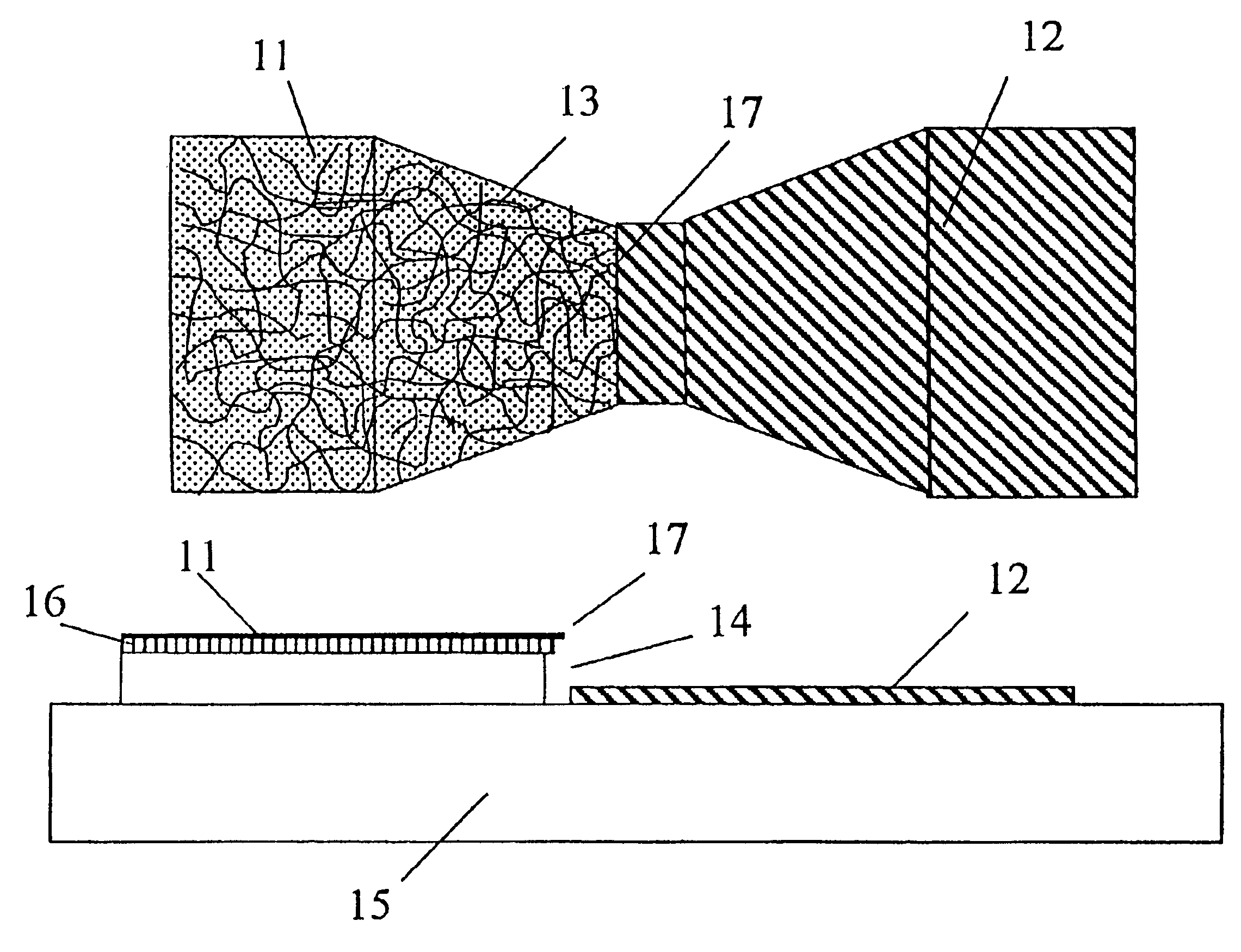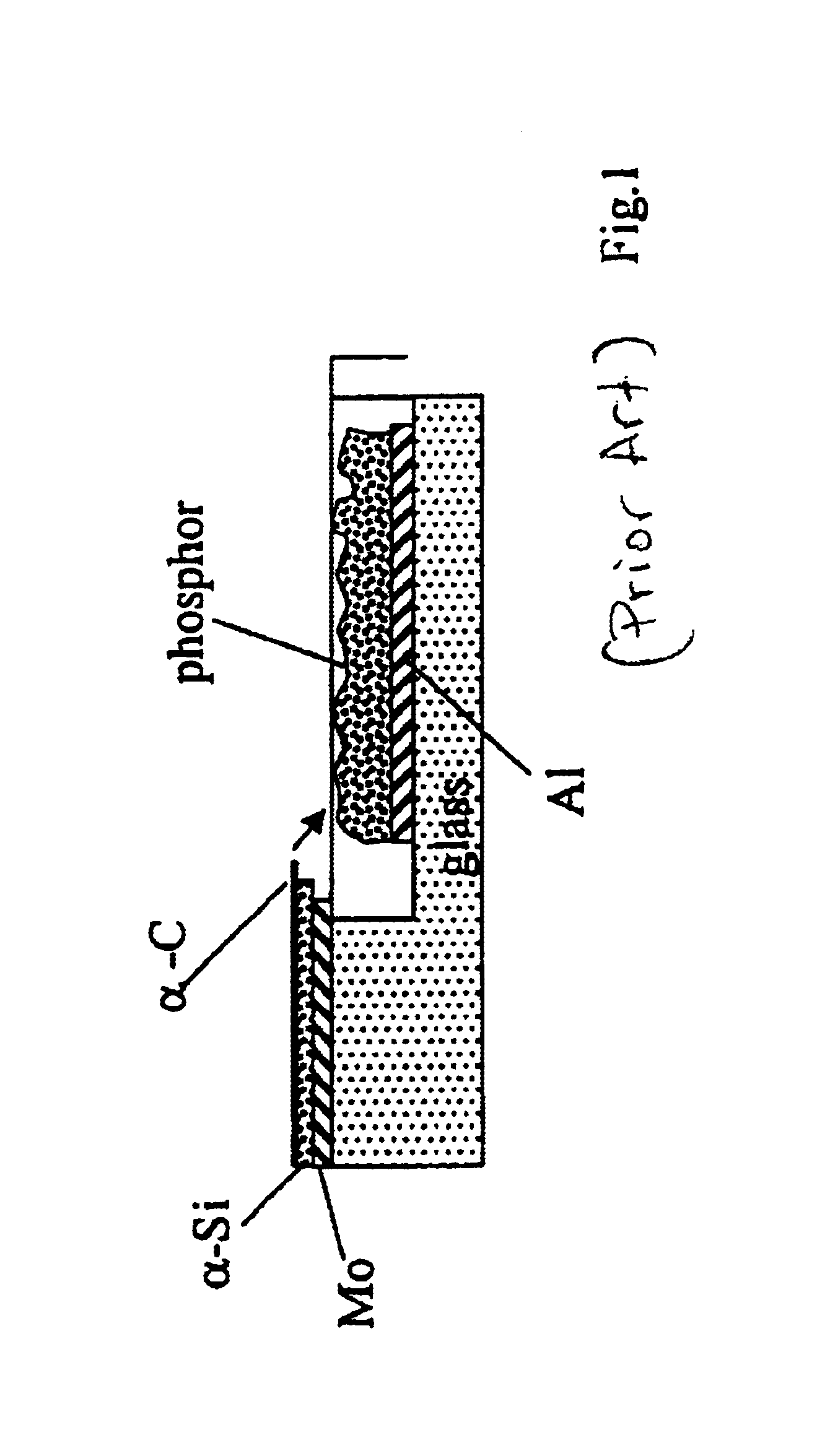Carbon-metal nano-composite materials for field emission cathodes and devices
- Summary
- Abstract
- Description
- Claims
- Application Information
AI Technical Summary
Benefits of technology
Problems solved by technology
Method used
Image
Examples
Embodiment Construction
[0041]FIG. 2 is an example of diagrams of atomic-scale composites structure and structures (Prior Art). The fundamental structure of the atomic-scale composites to be implemented as the field emission cathodes is comprised of two interpenetrating random networks. The first basic network consists of material capable of a low voltage emission, while the second is stabilizing dielectric network. An example of such structures are DL ASC, that belong to the diamond-like family of materials. There two major class of DL ASC. The first class of DL ASC consists of a random carbon network, mainly in the form of sp3 “diamond-like” bonds chemically stabilized by hydrogen atoms, and a quartz-like silica random network, e.g. silicon network chemically stabilized by oxygen atoms. These interpenetrated networks form together a purely amorphous structure (FIG. 2, a). Such two-network DL ASC does not contain any clusters or ordering greater than that defined by one third of the radius of the coordina...
PUM
| Property | Measurement | Unit |
|---|---|---|
| Percent by atom | aaaaa | aaaaa |
| Area | aaaaa | aaaaa |
| Nanoscale particle size | aaaaa | aaaaa |
Abstract
Description
Claims
Application Information
 Login to View More
Login to View More - R&D
- Intellectual Property
- Life Sciences
- Materials
- Tech Scout
- Unparalleled Data Quality
- Higher Quality Content
- 60% Fewer Hallucinations
Browse by: Latest US Patents, China's latest patents, Technical Efficacy Thesaurus, Application Domain, Technology Topic, Popular Technical Reports.
© 2025 PatSnap. All rights reserved.Legal|Privacy policy|Modern Slavery Act Transparency Statement|Sitemap|About US| Contact US: help@patsnap.com



